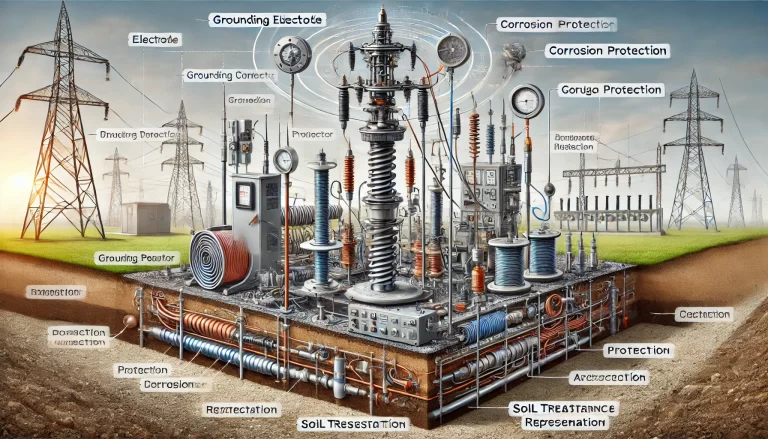Introduction
The International Electrotechnical Commission (IEC) has gradually moved away from multiple earthing (also known as repeated grounding) in electrical systems. This shift is driven by safety concerns, electromagnetic compatibility, system stability, and the evolving needs of modern power distribution. This article explores the rationale behind IEC’s decision to eliminate multiple earthing and the implications for electrical engineering and safety.

1. Safety Considerations
1.1 Reduced Risk of Electric Shock
One of the main reasons for phasing out multiple earthing is to reduce the risk of electric shock. In systems with repeated grounding, potential differences can arise between different grounding points, leading to:
Step voltage hazards: Voltage differences between two ground points can create dangerous conditions for personnel walking near the grounding points.
Touch voltage risks: If an individual touches two grounded surfaces with different potentials, electric shock can occur.
By implementing a single grounding system with a low impedance path, the IEC aims to create a more controlled and safer environment.
1.2 Prevention of Fault Current Bypassing
In traditional TN-C-S (combined neutral and earth) systems, repeated grounding can sometimes cause return currents to take unintended paths, bypassing protective devices such as circuit breakers and residual current devices (RCDs). This can lead to a failure in fault detection and an increased risk of electrocution or fire.

2. Reduction of Electromagnetic Interference (EMI)
2.1 Eliminating Ground Loops
Multiple grounding points in an electrical system can create ground loops, which act as antennas for electromagnetic interference (EMI). These loops can induce unwanted currents, leading to:
Signal distortion in communication networks
Malfunctioning of sensitive electronic devices
Unstable operation of industrial automation systems
By eliminating multiple earthing, the IEC minimizes these issues, ensuring better performance for modern electrical and electronic systems.
2.2 Enhancing Electromagnetic Compatibility (EMC)
With the growing prevalence of smart grids, renewable energy integration, and industrial automation, maintaining a stable electromagnetic environment is crucial. A well-defined, single-point grounding system prevents excessive EMI, improving the reliability and efficiency of electrical networks.
3. Improved System Stability
3.1 More Predictable Ground Potential
A single, properly designed grounding system ensures a consistent and stable reference potential. In contrast, multiple earthing points introduce variable potentials that can interfere with protective relays, voltage regulation, and overall system stability.
3.2 Supporting Modern Distribution Systems
With the shift towards digital substations, renewable energy, and distributed generation, modern power systems require:
Low impedance grounding to ensure fault currents flow in predictable paths
Reliability in high-frequency switching environments
Better harmonization with power electronics and smart grid technologies
Multiple earthing, being a legacy practice, does not align well with these modern requirements.

4. Standardization and Global Consistency
4.1 Unified Global Electrical Safety Standards
Different countries historically implemented various grounding methods, leading to compatibility issues in multinational industries. IEC’s move away from multiple earthing is part of an effort to standardize electrical safety practices across regions, ensuring interoperability in global electrical networks.
4.2 Compatibility with IT and Telecommunications Equipment
The IEC’s grounding guidelines align with the needs of IT infrastructure and data centers, where ground potential variations can cause:
Data corruption in networked systems
Disruptions in high-speed communication links
Damage to sensitive microelectronics
By phasing out multiple earthing, IEC improves the reliability of critical infrastructure.
5. Protection Against Corrosion and Electrolytic Effects
5.1 Preventing Corrosion of Underground Metal Structures
Multiple earthing creates unintended current paths through soil, accelerating corrosion in:
Underground pipelines
Cable sheaths and conduits
Structural reinforcements in buildings
5.2 Reducing Stray Currents
Stray electrical currents from poorly designed grounding systems contribute to electrolysis, leading to rapid degradation of infrastructure. A controlled single-point grounding system reduces this effect, improving the lifespan of electrical and civil infrastructure.

6. Recommended IEC-Compliant Grounding Methods
Instead of multiple earthing, IEC promotes:
6.1 TN-S System (Separate Protective Earth and Neutral)
In this configuration, the protective earth (PE) and neutral (N) conductors are separate throughout the system, ensuring:
Minimal interference and improved fault detection
Consistent voltage reference across the network
Better protection for sensitive loads
6.2 IT System (Isolated or Impedance-Grounded Neutral)
Used in hospitals, industrial plants, and high-availability systems, IT grounding provides:
Fault-tolerant operation with early fault detection
Minimized current leakage in case of a single fault
Improved reliability for critical applications
6.3 Equipotential Bonding
For environments requiring extra safety, such as medical facilities, equipotential bonding ensures all conductive parts maintain the same potential, preventing hazardous voltage differences.

Conclusion
The IEC’s decision to eliminate multiple earthing is based on enhancing electrical safety, reducing electromagnetic interference, improving power system stability, and ensuring global standardization. By adopting modern grounding methods such as TN-S, IT, and equipotential bonding, electrical systems can achieve higher reliability, safety, and efficiency, aligning with the needs of modern technology and infrastructure.
